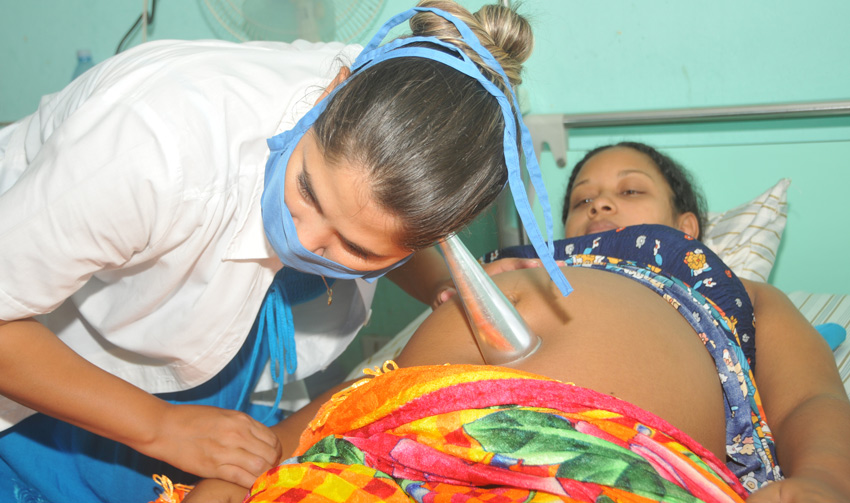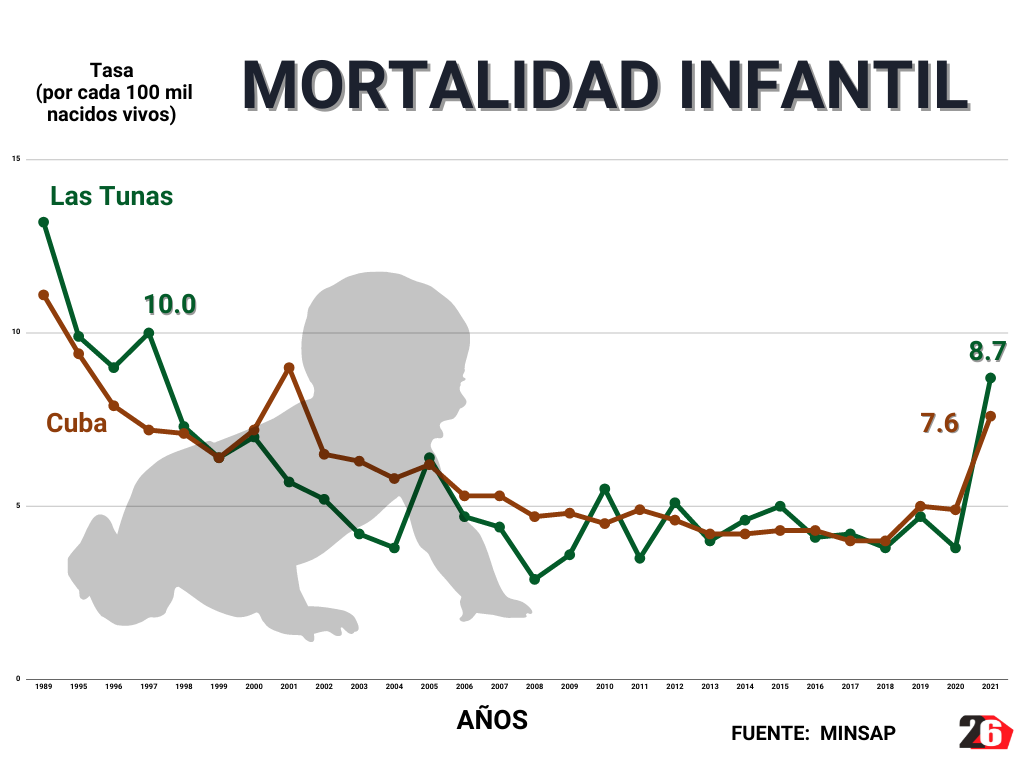
Efforts were not enough during 2021 to maintain the results of the Maternal and Child Care Program, or at least that is what the numbers show, which serve to quantify that the vulnerable points continue to be, more or less, the same as they have been for several calendars. But this time marked by a pandemic that has disrupted all the scenarios of life, monopolizing the protagonism of the processes, both in Primary Health Care and in hospitals.
Las Tunas, Cuba.- It is no coincidence that Las Tunas closed the year with an infant mortality rate of 8.7 per thousand live births, above the national average (7.6) and the highest since 1997! The number of deaths of children under 1 year of age doubled the number of deaths that occurred in 2020, one due to a complication of COVID-19, and three were children of mothers who became ill with COVID-19. This shows the need to rethink work styles in line with the circumstances imposed by the new coronavirus.
During this period, 4,687 births were recorded, 355 fewer than in the previous 12 months, a trend that has already taken up several calendars.
Dr. Osmara López Borrero, head of the Maternal-Children's Section of Las Tunas, explains the situation. The main causes of this high mortality rate have been low birth weight, premature births, intrauterine growth retardation, and teenage pregnancy. There are also deaths in children under one year of age due to congenital malformations.
Meanwhile, there are three maternal deaths, due to complications of Covid-19 and one related to childbirth. "This year about 500 pregnant women were infected with SARS-CoV-2, and not a few of them had premature deliveries, miscarriages, and stillbirths. There is still much to be clarified about this disease and its after-effects on the pregnant women and the fetus," she explains.
"It is no secret that we have lived through very hard times related to the coronavirus and what it represented for the Health System. Assistance was centralized at the primary care level and isolation centers were opened, which required human resources from the clinics, in addition to the demands of mass vaccination.
"So we have to grow and learn to work during this epidemiological situation, and we are on this path because we cannot think that the pandemic is over".
There are several areas to be strengthened, including the quality of prenatal care, risk assessment in pregnant women, and the application of protocols. Primary Health Care (PHC) is a neuralgic scenario that must recover its foundational concepts to stop being the Achilles heel of the program.
| Las Tunas closed 2021 with an infant mortality rate of 8.7 per thousand live births, above the national average (7.6) |
It is there where the first health services are provided, starting with reproductive risk control, that necessary intervention that the couple needs to face pregnancy in optimal conditions. "We are concerned about the increase in adolescent pregnancy, since this is not the age to get involved in the reproductive process, and today 21 percent of our pregnant women are in this group."
TO FIND THE WAY AGAIN
The lines of work, in the first place, seek to reinforce PHC with the guidance of the Provincial Health Directorate. At the secondary level, strategies are also drawn up to consolidate the main services related to the Maternal and Child Care Program (PAMI, by its acronym in Spanish).
Reversing the current scenario does not only depend on Health professionals but also on the integration of different sectors, from the social worker to community stakeholders. "We need medical indications to be complied with because something that affected us this year was the refusal of patients to enter maternity homes, hospitals, and in this the support of the husband, parents... is essential," comments López Borrero.
Although there is a significant deficit of material resources, she says, alternatives are always sought to prioritize maternal and infant care. "The reduction in numbers represents satisfaction and happiness for the families of Las Tunas, and we are committed to improving these results."
Behind the numbers is the everlasting damage of families that will never be the same again. Behind the figures, there is the imperishable damage of families that will never be the same again. There is the sleeplessness of a few who could not see the outcome of their work and had to bear on their shoulders the responsibility of those who did not do their part; but there is the will to rectify mistakes, adapt to the current scenario, and promote this program, the essence of the Cuban social system.
